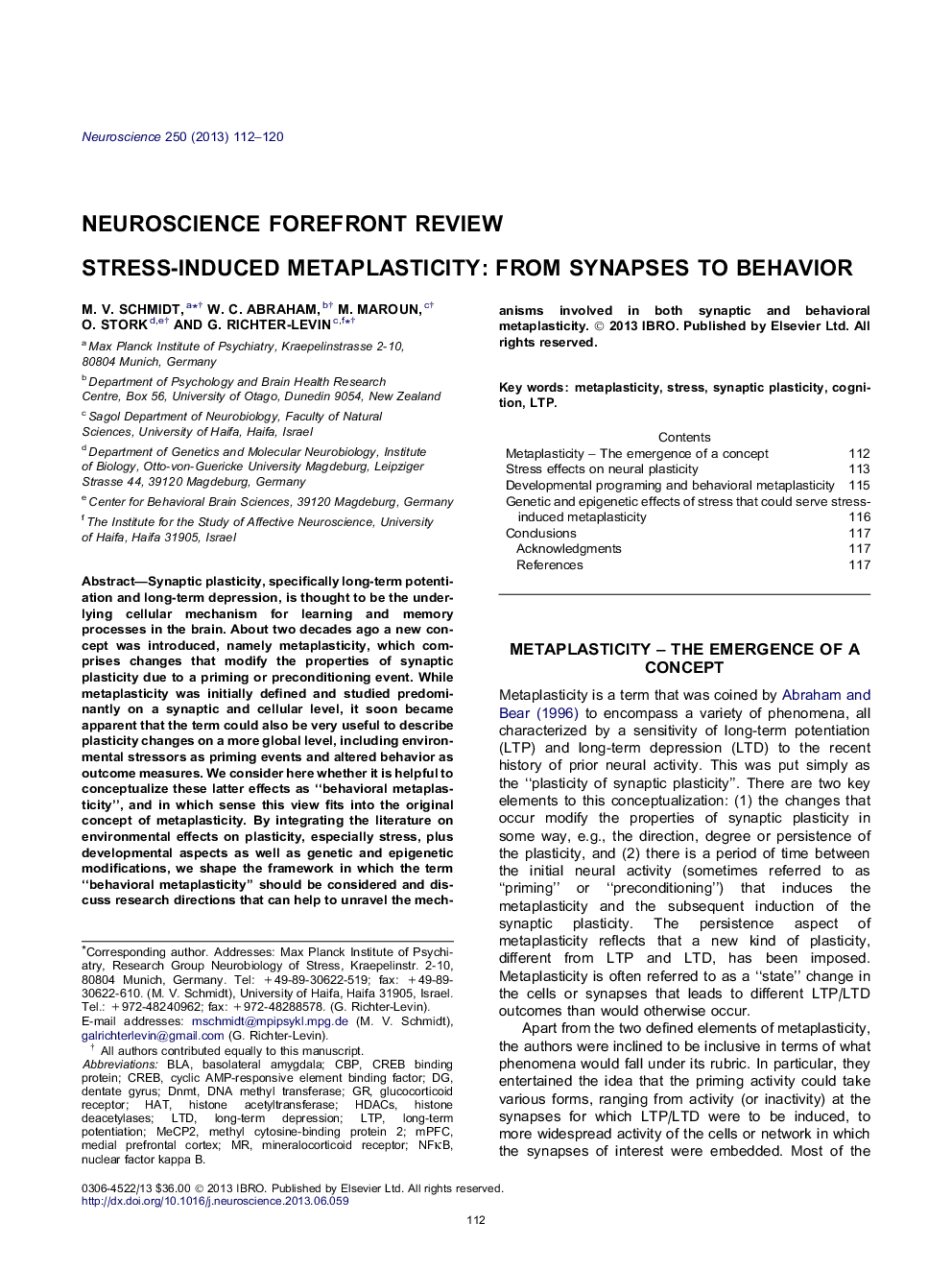| Article ID | Journal | Published Year | Pages | File Type |
|---|---|---|---|---|
| 6274431 | Neuroscience | 2013 | 9 Pages |
Abstract
Synaptic plasticity, specifically long-term potentiation and long-term depression, is thought to be the underlying cellular mechanism for learning and memory processes in the brain. About two decades ago a new concept was introduced, namely metaplasticity, which comprises changes that modify the properties of synaptic plasticity due to a priming or preconditioning event. While metaplasticity was initially defined and studied predominantly on a synaptic and cellular level, it soon became apparent that the term could also be very useful to describe plasticity changes on a more global level, including environmental stressors as priming events and altered behavior as outcome measures. We consider here whether it is helpful to conceptualize these latter effects as “behavioral metaplasticity”, and in which sense this view fits into the original concept of metaplasticity. By integrating the literature on environmental effects on plasticity, especially stress, plus developmental aspects as well as genetic and epigenetic modifications, we shape the framework in which the term “behavioral metaplasticity” should be considered and discuss research directions that can help to unravel the mechanisms involved in both synaptic and behavioral metaplasticity.
Keywords
HDACsCREBBLADNA methyl transferaseDnmtMPFCMecp2CBPbasolateral amygdalaNFκBStresslong-term depressionlong-term potentiationLTPCognitiondentate gyrusnuclear factor kappa Bmedial prefrontal cortexmetaplasticityLTDhistone deacetylasesHistone acetyltransferaseCREB binding proteinSynaptic plasticityHATMineralocorticoid receptorglucocorticoid receptor
Related Topics
Life Sciences
Neuroscience
Neuroscience (General)
Authors
M.V. Schmidt, W.C. Abraham, M. Maroun, O. Stork, G. Richter-Levin,
